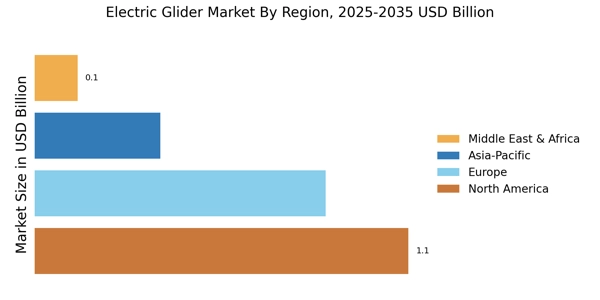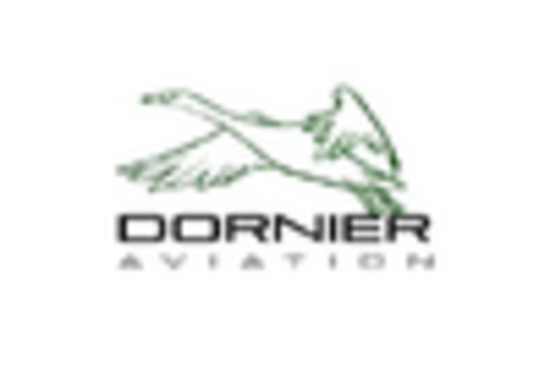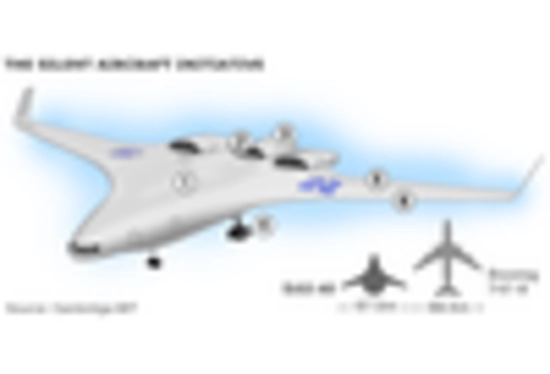Supportive Regulatory Frameworks
Supportive regulatory frameworks are crucial for the growth of the Electric Glider Market. Governments are increasingly implementing policies that promote the use of electric aircraft, including electric gliders. In 2025, various regions are expected to introduce incentives such as tax breaks, grants, and streamlined certification processes for electric aviation technologies. These measures aim to encourage manufacturers to innovate and bring electric gliders to market more efficiently. Additionally, regulatory bodies are working to establish safety standards that facilitate the integration of electric gliders into existing airspace systems. This supportive environment is likely to enhance investor confidence and stimulate further advancements in the Electric Glider Market, ultimately leading to a more robust and competitive market landscape.
Advancements in Battery Technology
Advancements in battery technology are playing a pivotal role in the Electric Glider Market. The development of high-capacity, lightweight batteries has significantly improved the performance and range of electric gliders. Recent innovations, such as solid-state batteries, offer enhanced energy density and safety features, which are crucial for the viability of electric gliders. As of 2025, the market is witnessing a shift towards batteries that can provide longer flight times and quicker charging capabilities. This technological evolution not only enhances user experience but also contributes to the overall growth of the Electric Glider Market. The integration of advanced battery systems is likely to attract a broader customer base, including recreational users and professional pilots, thereby expanding market opportunities.
Growing Popularity of Recreational Flying
The Electric Glider Market is witnessing a growing popularity of recreational flying among enthusiasts. As more individuals seek leisure activities that align with their values of sustainability and adventure, electric gliders are emerging as an attractive option. The appeal of silent, emission-free flight is drawing in a diverse demographic, from hobbyists to aspiring pilots. In 2025, the market is expected to see a significant increase in sales driven by this trend, with recreational flying clubs and training schools incorporating electric gliders into their programs. This shift not only enhances the visibility of electric gliders but also fosters a community of users who advocate for their benefits. Consequently, the Electric Glider Market is likely to expand as it taps into this burgeoning interest in recreational aviation.
Increased Investment in Electric Aviation
The Electric Glider Market is benefiting from increased investment in electric aviation. Governments and private investors are recognizing the potential of electric gliders as a sustainable alternative to conventional aircraft. In 2025, funding for electric aviation projects is projected to reach unprecedented levels, with investments aimed at research and development, infrastructure, and production capabilities. This influx of capital is expected to accelerate the development of electric gliders, making them more accessible to consumers. Furthermore, partnerships between aerospace companies and technology firms are likely to foster innovation, leading to the introduction of new models and features. As a result, the Electric Glider Market is poised for substantial growth, driven by a collaborative approach to advancing electric aviation technologies.
Rising Demand for Eco-Friendly Transportation
The Electric Glider Market is experiencing a notable surge in demand for eco-friendly transportation solutions. As environmental concerns escalate, consumers are increasingly seeking alternatives to traditional fossil fuel-powered vehicles. This shift is driven by a growing awareness of climate change and the need for sustainable practices. In 2025, the market for electric gliders is projected to expand significantly, with estimates suggesting a compound annual growth rate of over 15%. This trend indicates a robust consumer preference for electric gliders, which are perceived as cleaner and more efficient modes of transport. Consequently, manufacturers are investing in innovative designs and technologies to meet this rising demand, thereby enhancing the overall appeal of the Electric Glider Market.


















Leave a Comment